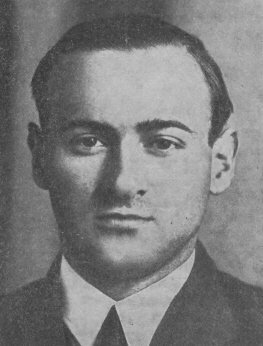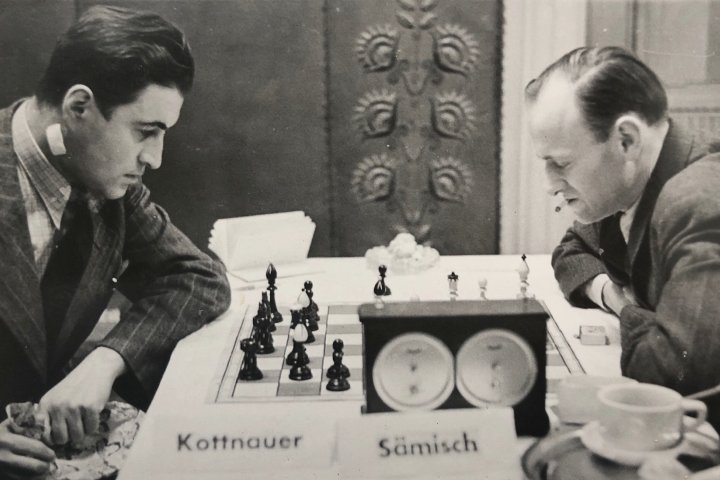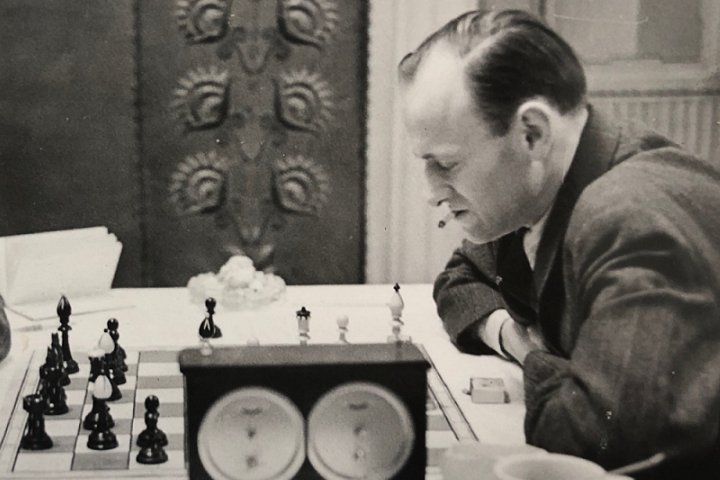Sämisch was a delicate, quiet man, who knew how to enthrall his fans with amazing stories and was able to captivate audiences at tournaments and simultaneous exhibitions alike. On September 20, he would have celebrated his 125th birthday. He was beloved among 'normal' chess players and knew how to spin exciting yarns about masters and games from days long past, which earned him more than one resounding round of applause. In spite of this, the Grandmaster himself was quite reserved, almost shy. He is sometimes referred to as the 'Berliner from Charlottenburg' - at his birth in 1896, the district of Charlottenburg had not yet become a part of Berlin.
On this DVD GMs Rogozenco, Marin, Müller, and IM Reeh present outstanding games, stunning combinations and exemplary endgames by Alekhine. And they invite you to improve your knowledge with the help of video lectures, annotated games and interactive tests
In 1919, at the very start of his career in chess, he shared a flat with Efim Boguljubow. They lived together for about a year, with Sergey Selesniev visiting so frequently that he basically became their flatmate. Sämisch was also a good friend of Alekhine, who was a kind of an older brother for him.
In the New York Times Alekhine once wrote about Sämisch, who had never played in the United States and did not have a single acquaintance in New York, Chicago or Los Angeles: "He could play among the very best, if he only managed to quit his extreme smoking." Alekhine wrote this during the tournament in Karlsbad, where Alekhine worked as a correspondent for American papers. Alekhine himself did not play in Karlsbad because of the World Championship against Bogoljubov which began soon afterwards. "I think I am partially to blame for his poor performance. I must have stared at him too intently. It irritated him."
Throughout his life, Sämisch never thought much of titles and honours. He never wore his Iron Cross, which he had been awarded after suffering two serious injuries in World War I. It eventually disappeared when Sämisch's house was destroyed in an air raid on Berlin-Pankow in World War II. His library, the huge collection of his chess columns, published in various newspapers, his scoresheets, his photographs and the two bronze medals from the 1930 Chess Olympiad in Hamburg and the inofficial Olympiad in Munich 1936 were devoured by the flames, and with them a lot of memories. "Mister Harris did not like it and destroyed it all," Sämisch commented laconically.
He almost always managed to prevent anyone from looking into his soul. He did this after his marriage had failed quickly, though he must have suffered greatly. The fact that Sämisch, who usually played a lot, did not play a single tournament and held none of his popular exhibitions for half a year after the separation, is an indicator of this.
He also suffered when the Nazis came to power and changed the language. Almost everything was about "fighting", "war", "triumph" or "annihilation". A man who does not really care about results and points and who primarily wished to play a good game had no place among these hyper-competitive players.
Sämisch chose a particular form of 'inner emigration': Except for 1933, he did not participate in any German championship while the Nazis were in power. After 1941, he even managed to avoid becoming part of the German national team. However, he was arrested by the Gestapo in Berlin in 1943 after his return from a tournament in Madrid.
In Spain, he had said "Hitler cannot win the war", and at that time, being found guilty of defeatism usually resulted in a death sentence. However, luck was once again on Sämisch's side: His files were destroyed in an air raid, and he had to be released from custody.

He soon fled to Schleswig-Holstein, where he spent the first few years in Kiel. This is where he received the message that he had been granted a special honour: At its 1950 congress in Copenhagen, the World Chess Federation (FIDE) had decided to award the 53-year-old and 26 other Masters the official title of 'International Grandmaster'. Sämisch was the first and only German player among the recipients and was now on one level with the 'elders' Mieses (who had long since acquired English citizenship), Euwe, Maroczy, Duras, Vidmar and Grünfeld, as well as the 'young ones', such as Reshevsky, Flohr, Botvinnik, Bronstein oder Smyslov. In a typical show of modesty, the man from Berlin published an article in the "Deutsche Schachhefte" asking:
"Who is Grandmaster?
"One deserves to be called a Grandmaster after winning against all or almost all 'famous' players of one's time. A poor score, which e.g. Marshall had against Lasker, Capablanca and Tarrasch, should not be a factor in this regard. He won against all three, which means that he was a real threat to any player, and the mere fact that he could reach this level serves as proof that he was among the great players of his time.
A real and incontestable list of Grandmasters would therefore undoubtably include Lasker, Capablanca, Alekhine, Euwe, Marshall, Tarrasch, Janowski, Schlechter, Bogoljubow, Botvinnik, Keres, Resevsky, Fine, Maroczy, Pillsbury, Rubinstein, Nimzowitsch, Flohr, Reti, Spielmann, Tartakower, Teichmann, Vidmar, Grünfeld, Bernstein and Duras. Players on the level of Grandmaster would be Szabo, Najdorf, Smyslov, Bronstein, Eliskases and many more. But strength alone should not serve as the only basis for a reputation. By this logic, a peacetime general would have to be placed on the same level as a famous and successful strategist. For a player to have proven himself in practice is essential. If he did not take part in the fighting, one cannot know his mettle.
I have played against 21 of the 30 players listed (there are actually 31 - MD). However, I have only beaten 10 of them in individual games. Therefore, I do not belong."
This self-assessment is laudable, but it omits a number of facts. For a number of reasons, Sämisch never played against seven of the players listed above. He never played against Pillsbury, who died in 1906, Schlechter, who died in 1918, or Duras, who ended his career in 1914, because he was too young; others like Botvinnik, Bronstein or Smyslov, achieved their greatest triumphs only after World War II. By then, Sämisch was past 50 and thus too old for high-level tournaments.
Of the remaining 25 Masters, he beat eleven: Capablanca, Marshall, Euwe, Bogoljubow, Reshevsky, Maroczy, Nimzowitsch, Réti, Spielmann, Tartakower, Grünfeld. He managed at least a draw against Lasker, Teichmann, Tarrasch, Rubinstein, Alekhine, Vidmar, Flohr, Eliskases, Keres und Najdorf. Only against Janowski (one game), Bernstein (one) and Lazlo Szabo (two) did he end up scoring no points.
Grandmaster or not, when it came to blindfold simuls, he remained a world-class player. Sure, he did not establish any world records like Alekhine and Réti with their relentless duel, which began with 26 simultaneous games and gradually grew to encompass a grand total of 33. The contest was indadvertently cut short by Réti's untimely death.

Kottnauer and Sämisch, Prague 1942 | Image: British Chess News
Sämisch rarely played more than ten blindfold games per exhibition. However, he did it so frequently that experts estimate he played over 4000 blindfolded games in total. An example of this would be his tour thorugh Silesia and Saxony in January and February of 1926. Its highlight was his exhibition in Wroclaw, where he played at 20 boards simultaneiously and established a new German record with +14, =5, -1. Over the course of this tour, he played 142 games, scoring 108 wins, 17 draws and 17 losses. Over the course of the year, he played more than 400 blindfold games, always intent on adhering to the benchmark set by his role model Jacques Mieses, who was of the opinion that "a simultaneous blindfold exhibition should not take longer than a play on stage."
Alekhine showered him with praise. In his book 'On the Road to the World Championship 1923 – 1927' he wrote: "Even among the modern Masters, there are a number of good blindfold players. [...] Out of all modern Masters I have had the opportunity to observe playing blindfold games, I liked Sämisch the most; his superior technique, his speed and precision have impressed me greatly."
This sort of compliment is something Sämisch would most certainly have enjoyed.
- Translation from German: Hugo B. Janz
Links
More about Alexander Alekhine...

























